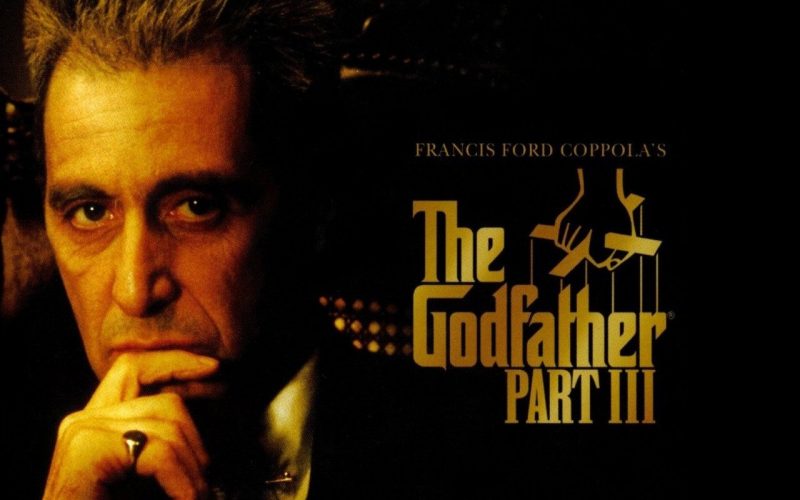In Defence of… The Godfather: Part III (1990).
In what’s become a regular feature on Film ’89, we take another look at a maligned and/or misunderstood film that may not have received the credit it deserves and may be worthy of a second chance. In our fourth entry in the series, we take a look back at the 1990 sequel, The Godfather Part III.
Few would dispute that The Godfather and its sequel, The Godfather: Part II are amongst the greatest and most beloved films ever made. They are of that rare breed of movie that captures both the imagination of the film-going public and the appreciation of critics and are regularly cited on lists of the greatest movies ever made. The first film, released in 1972, was nominated for eleven Academy Awards and won three (Best Picture, Best Adapted Screenplay and Best Actor for Marlon Brando) and the second, released two years later, was even more successful winning nine awards including one for its director Francis Coppola and for Robert de Niro (who played the young Vito Corleone – the first time two different actors have won Best Acting Awards for playing the same character). It was the first sequel to win the Best Picture award and it seemed to nicely wrap up the incredible and epic story of the Corleone family.
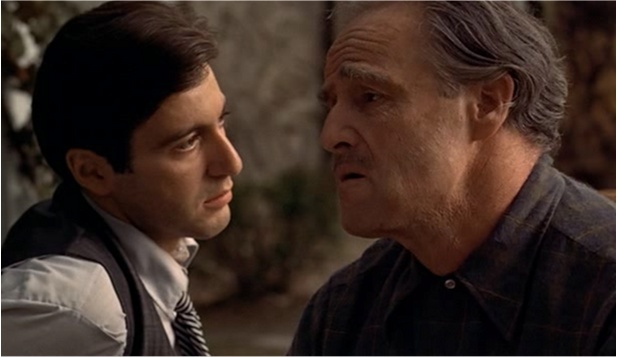
It was inevitable however, that given the success of these two films, Paramount – the studio behind the films – would want a third instalment and in 1990 after the high profile failure of a number of projects, Coppola finally agreed to direct.
Written by Coppola and Mario Puzo, this final instalment was originally titled The Death of Michael Corleone (a title that Paramount rejected). It had the impossible task of living up to the reputation of its predecessors which had grown massively in the intervening sixteen years. It had to contend with the acclaim and nostalgia that the first two films had accumulated in the hearts of a generation of cinephiles.
When it was finally released, The Godfather: Part III received a mixed reception. On Rotten Tomatoes it only has a 67% rating – Fresh but nothing like that of the first two films. Some critics rated it highly including Roger Ebert and Gene Siskel. It was nominated for seven Oscars but won none and Sofia Coppola won worst actress at the 11th Golden Raspberry Awards.
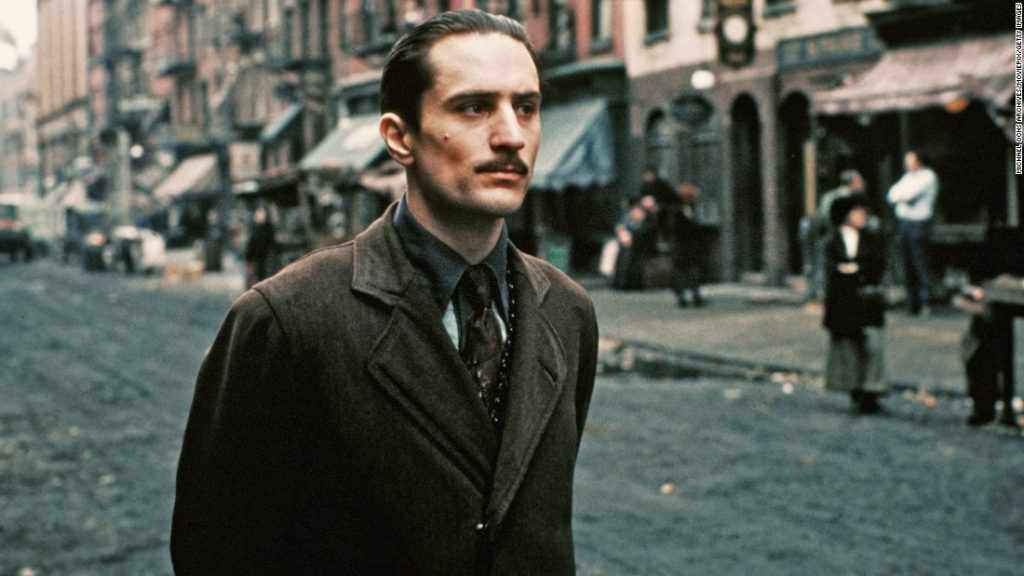
It’s fair to say that to many people The Godfather: Part III is the lesser entry in the trilogy, an anti-climax to one of cinema’s greatest stories, but I believe this is grossly unfair. Even if it is the weaker of the three this is only because of the lofty standards set by Parts I & II. It continues the story of the Corleone family whose rise to power is brilliantly detailed in Parts I & II and focuses on the patriarch, Michael, as he struggles to become a legitimate businessman and cleanse himself of the multitude of sins he has accumulated.
Many people believe that the main character in The Godfather is Don Vito Corleone, played by Marlon Brando. After all he was the biggest name, played the head of the family and of course received the biggest cheque for taking part. However, the heart of the film, a heart that starts out innocent but is slowly corrupted is his son Michael, played by Al Pacino.
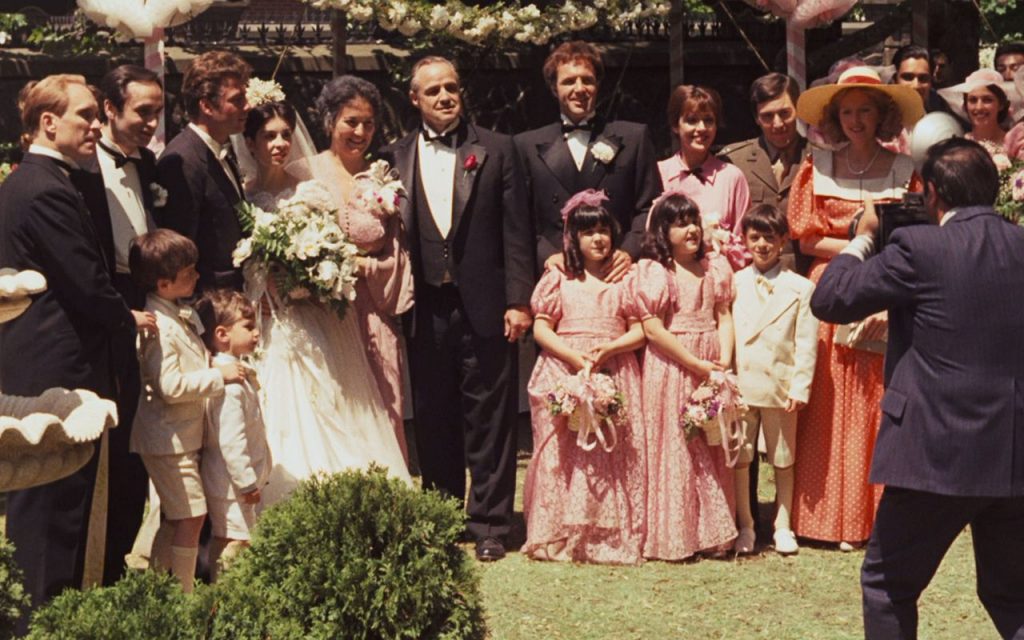
We are first introduced to the family at the lavish wedding in honour of Don Vito’s only daughter, Connie (Talia Shire). Here Michael’s role is to introduce us, the audience, to the family and the organisation, with his girlfriend Kay (Diane Keaton) serving as the surrogate for the audience. He is a clean-cut soldier who, although aware of the family business, is not involved in it. This is how Michael wants to keep it. After telling Kay a frightening story of the violence his family is capable of, he reassures her by telling her, “That’s my family, Kay, it’s not me.” Inevitably he is drawn deeper and deeper into the family and, after the attempt on his father’s life, he starts to play a more active role. From here his journey is set and ultimately he takes over the role of Godfather after Vito’s death.
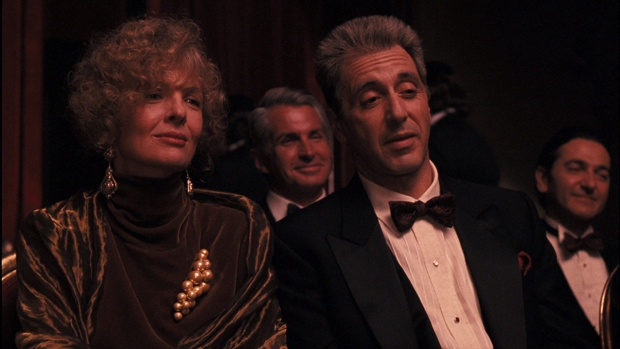
Part II parallels Michael’s consolidating of power and his story is told in conjunction with the rise of his father in the 1920s. Strikingly, Vito takes to the part with little resistance, more proactive than his son. Slowly his reputation grows as he shows equal capacity for compassion and cold, unflinching violence. Michael, in contrast, doesn’t always seem comfortable in his role and sometimes seems as if he is not in complete control. Michael is conflicted. He knows how to use violence and intimidation but at the same time there seems to be a very real honesty in his words as he continually promises Kay that he is working on becoming legitimate.
Watching Part II in isolation, these promises seem hollow, duplicitous excuses made to calm his wife’s objections, but in the light of Part III they carry more weight and we get a glimpse into the burden that Michael carries, his sins are like a yoke around his neck. In Part III he is racked with guilt for the events detailed in Part II, especially the murder of his brother Fredo. At one point on a visit to the Vatican he has a panic attack and confesses in one of the film’s best scenes, “I, uh, betrayed my wife. I betrayed myself. I’ve killed men, and I ordered men to be killed. No, it’s useless. I killed… I ordered the death of my brother; he injured me. I killed my mother’s son. I killed my father’s son.”
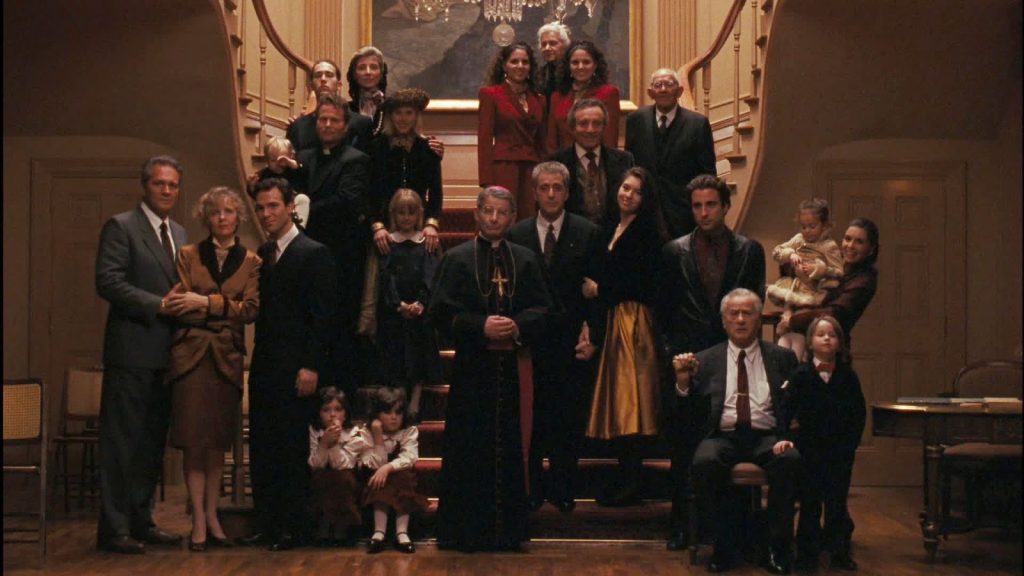
The Godfather Part III begins, like Part I, at lavish party – this time celebrating Michael receiving a medal from the Vatican in honour of his charity work. The spine of this film is Michael’s attempts to buy a majority stake in International Immobiliare, an internationally renowned Real Estate company currently owned by the Vatican. The reason for this is twofold; Firstly to buy his legitimacy – after all, the Holy Church being willing to do business with you is indeed a badge of honour and respect. The fact that only the Pope himself can finalise the deal would also strengthen the impact on the Corleone’s reputation.
Secondly, the deal would also benefit the papal bank which have driven up a huge overdraft and the sale of International Immobiliare would go a long way to plugging this hole. In trying to attain legitimacy, Michael makes a lot of enemies, especially Joey Zasa (Joe Mantegna) who feels he is being short changed from the sale of the Corleone’s casinos.
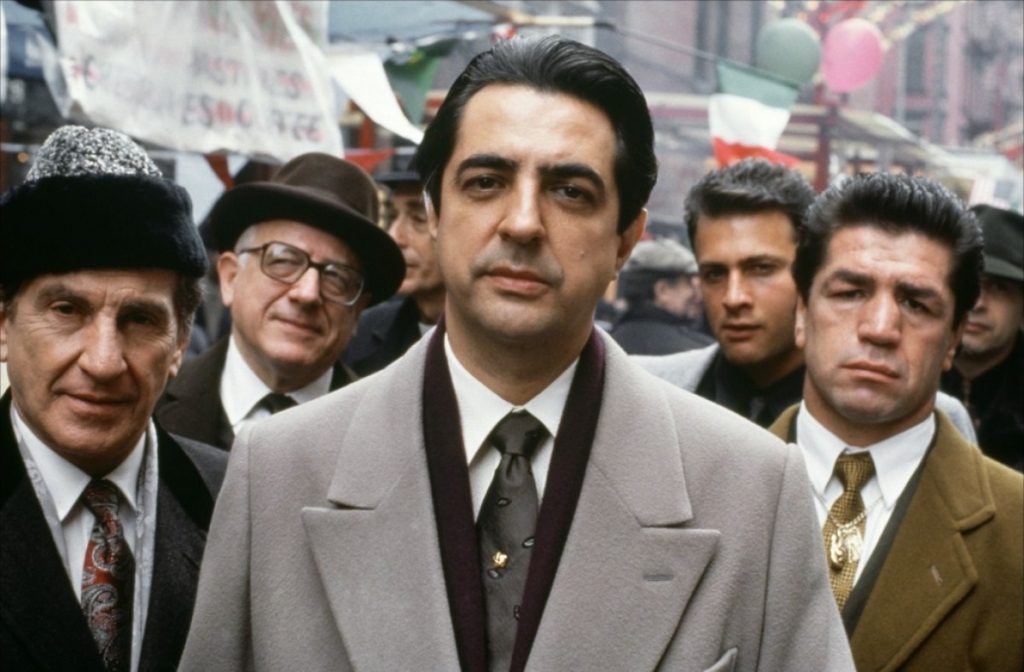
This is the thread that carries the film, the foundation to the drama and the violence that follows. However, for me, the true drama comes from Michael’s continuing attempt to go clean, via confession, business or the purchasing of forgiveness, and his continual failure to achieve this, that is the true heart of the film.
This battle is perfectly summed up in a scene filmed in one of the more mundane of settings – the Kitchen. Like many films a line of dialogue delivered beautifully by an actor at the top of their game can represent the film as a whole. It’s night-time, there’s a storm outside adding to the charged atmosphere in the room. Michael is pacing, his head spinning as he tries to work out who is behind an attempt on his life and the lives of members of other families. He knows that Joey Zasa couldn’t have organised it. He knows that there is another, a puppet master pulling the strings. For Michael this is a moment he has dreaded. Everything was coming together and legitimacy was within his grasp. He understands it, he even respects what Zasa has done but he was hoping the rules had changed, for him at least. His nephew Vincent (Andy Garcia) is old school and naïve and he wants revenge. “Well you tell him from me, that he can live, or he can die” he says with a swagger. But Michael wants none of it. It is the thinking behind this very response that he is trying so desperately to escape.
Vincent leaves the kitchen accompanied by a roll of thunder and flashes of lightning. Michael looks defeated, he knows what needs to be done and he has no choice. Then the inevitability of it is summed up in twelve words;
“Just when I thought I was out… they pull me back in.”
This is the tragedy of The Godfather: Part III. If Part I was about the corruption of an innocent, Part II was about how absolute power can corrupt absolutely, Part III is about the tragedy of never getting that innocence back. You may have power, you may have money, influence and friends and colleagues in the highest places, but if you live in a world of corruption then you too are corrupt and its stain will forever linger.
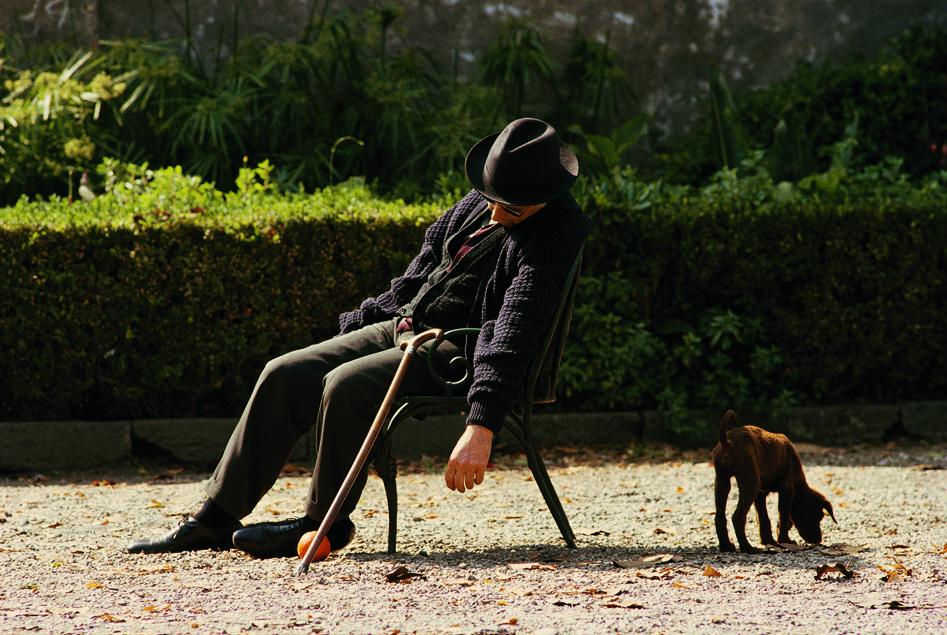
In the end, Michael’s demise seems to mirror that of his father’s, peacefully as an old man. But Vito’s death is presented as that of an old businessman at the end of his life, playing with a child, happy. For Michael death comes alone, in a chair, no one with him, a sad, broken man haunted by acts he could never undo.
The Godfather: Part III may not seem to reach the heights of the first two films yet it is both an intimate portrait of a man slowly collapsing under the pressures of his own sins, and an epic story of the corruption that runs, not only through a powerful family, but also through the world’s symbol of power and incorruptibility. It is not merely an add-on, an unnecessary extension to a finished set of films, it adds layers of depth and understanding that reveal more about the Godfather himself than either of the two previous films.
The performances are mostly top notch and it’s good to see Michael, Kay and Connie back again, each, in their own ways, having been changed, deformed almost by the family’s sins. Others that must been mentioned are Andy Garcia as Sonny’s fire-brand illegitimate son Vincent, Eli Wallach as Don Altobello and Joe Mantegna as Joey Zasa.
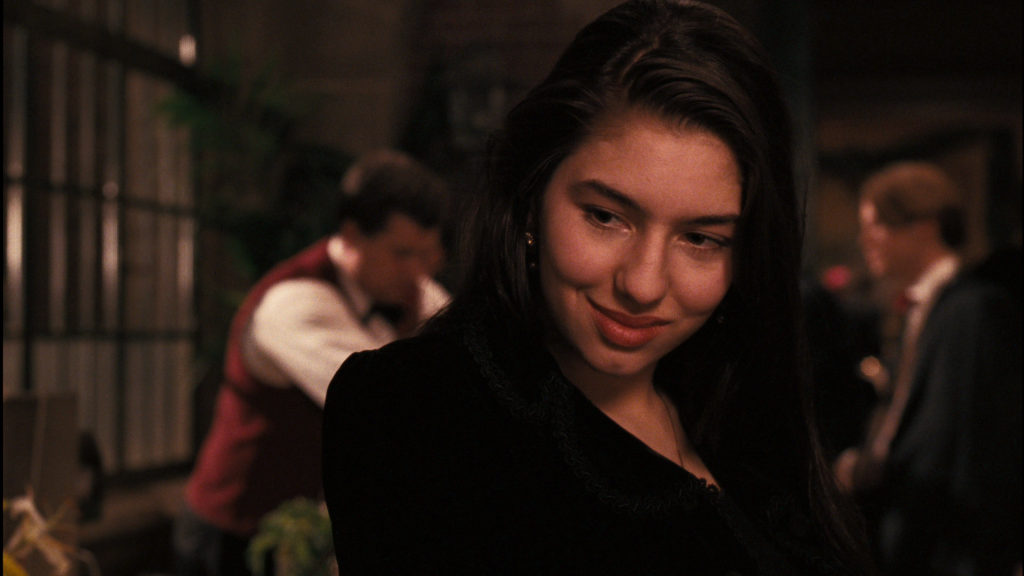
If there is a weakness in Part III it is Sofia Coppola as Mary Corleone. It’s a role that seemed ill-fated from the beginning. Julia Roberts was originally cast but had to drop out because of scheduling issues. She was replaced by Rebecca Schaeffer who was tragically shot by a stalker before filming began. Next it was Winona Rider who also dropped out at the last minute (she later repaid Coppola for the inconvenience she caused by introducing him to the screenplay for Bram Stroker’s Dracula). Madonna wanted the part but Coppola felt that she was too old and finally Coppola turned to his daughter Sofia. Unfortunately, this was an error as she is not able to stand shoulder to shoulder with the giants around her. Her performance is not as awful as many claimed it was, however, it wasn’t suited to this role and a film of this scale and grandeur.
This aside, The Godfather: Part III is a fitting addition to one of the greatest trilogies of all time. It doesn’t quite reach the heights of its predecessors, but it is a worthy, entertaining and thoroughly engrossing movie.
Film ‘89 Verdict – 8/10

